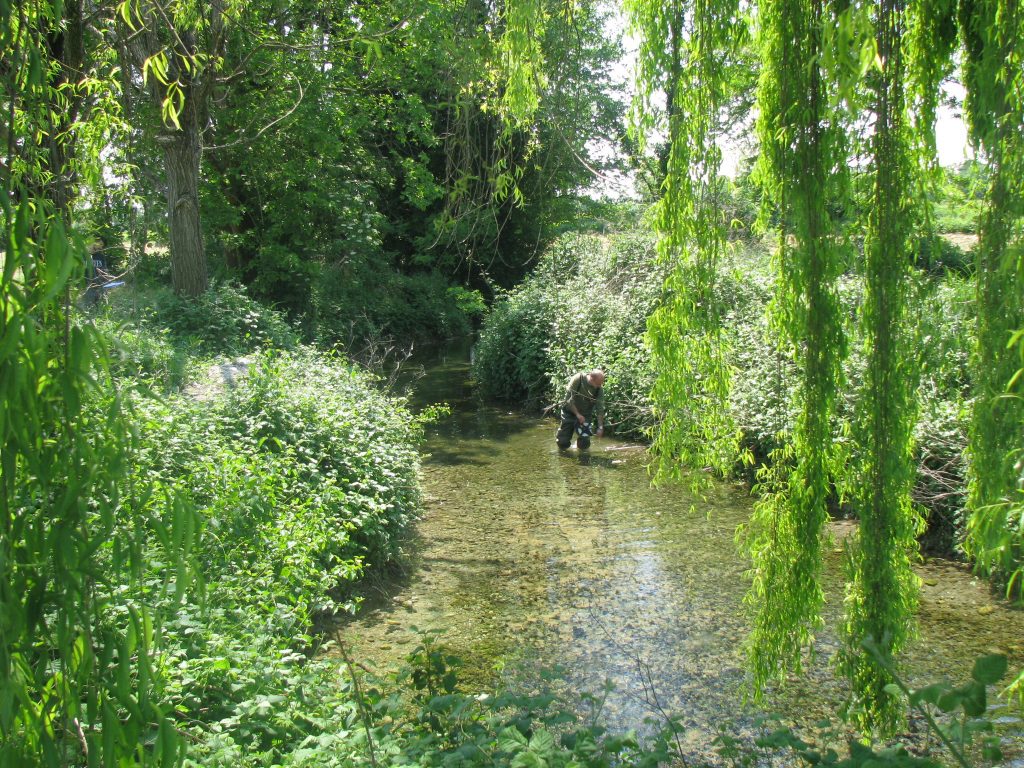Task 3.1 Definition of the hydrological response of springs (CNR-IRSA)
- Seasonal field campaigns in fifty springs located within Ticino and Adda basins in order to measure discharge and nitrate, chloride and sulfate concentrations, pH and conductivity
- Estimate of N loads exported by springs at each basin and analysis of temporal trends
- Identification of the environmental factors controlling the variability of nitrate
- Grouping of the studied springs based on multivariate statistical techniques.

Field works in the spring belt (Photo credits: R. Balestrini)
Task 3.2 Intensive monitoring of selected springs (CNR-IRSA, EES-UNIPV)
- The springs of the Adda basin were grouped on the base of their hydrological temporary character. The groups include the springs completely dry from February to July and, at the opposite extreme, those showing small variations of discharge. Some springs (1-3) of each group will be monitored with a high frequency from the opening of the main irrigation channels (April-May) in order to follow the rising of discharge and the temporal variation of nutrient concentrations during the irrigation period.
Task 3.3 Identification and quantification of groundwater input to rivers (LS-UNIPR, EES-UNIPV)
- Open-channel sampling method performed seasonally along a river reach fed by groundwater
- Combined sampling method with suitable model to identify and quantify all the components of the river discharge
- Analysis of flow measurements, physico-chemical and conservative parameters, nutrients and gas saturations (Membrane Inlet Mass Spectrometry)
- Analysis of stable isotopes of dissolved nitrates to recognise the main biological processes affecting nutrient concentrations as a function of time and variations in the hydrological regime
